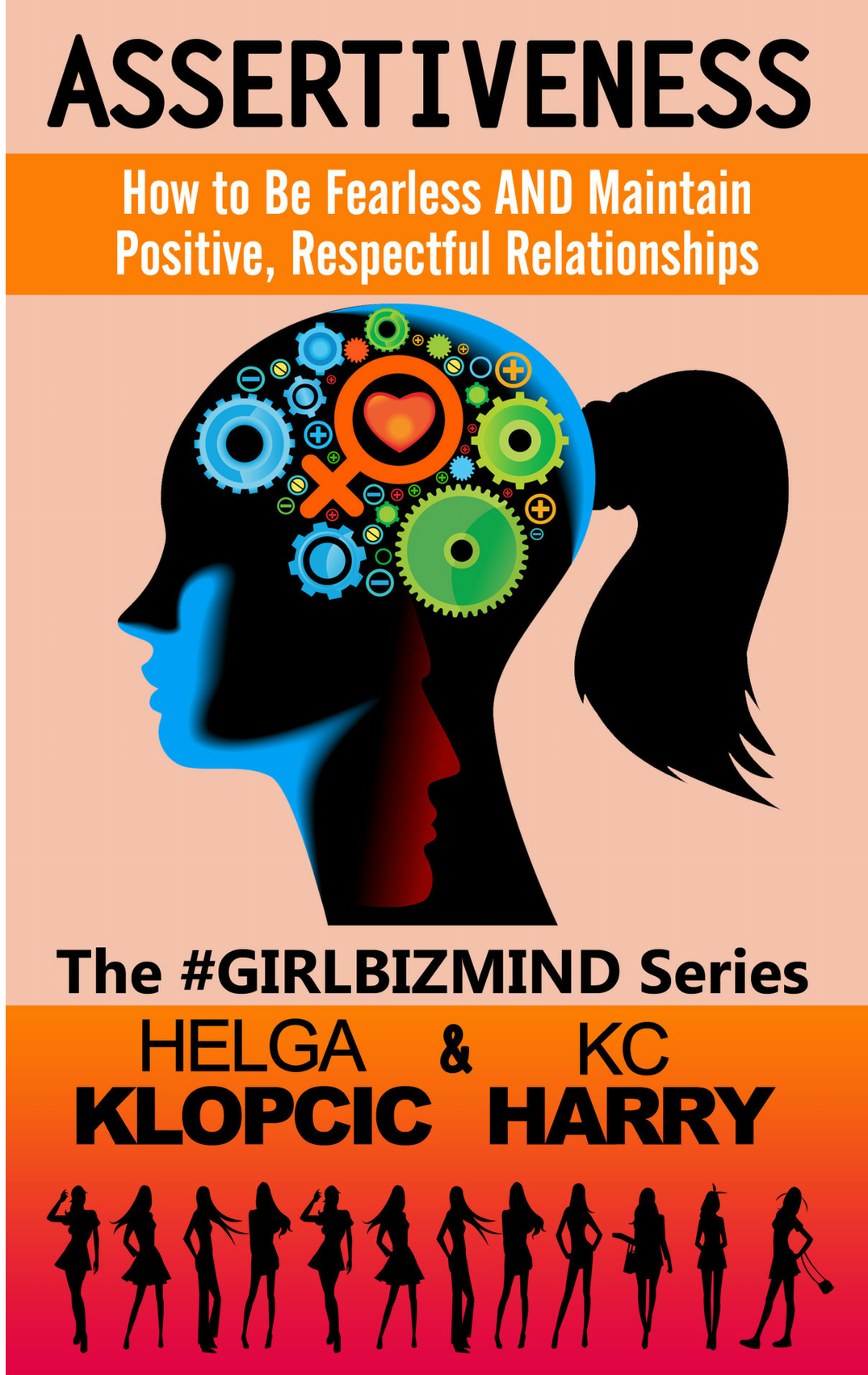
 My annual professional goals at work include reading one book per quarter on certain topics & blogging about them. For Q1, I read and reviewed Primal Leadership.
My annual professional goals at work include reading one book per quarter on certain topics & blogging about them. For Q1, I read and reviewed Primal Leadership.
For Q2, I started a book about negotiation but found myself unable to recall what I’d read (so much for reading on a plane!), so I switched topics & read a book on assertiveness written specifically for women in the workplace.
Assertiveness: How to Be Fearless AND Maintain Positive, Respectful Relationships is one book in a 6-part series written by Helga Klopcic and KC Harry, who met through a program for entrepreneurs.
After the authors each describe the epiphanies that led them to make drastic course changes in their careers, the book begins with a general discussion of what assertiveness is and is not (aggression).
“In a nutshell, you have a fundamental right of sorts as a human being to express yourself, if in doing so you don’t trample on the rights of others. You also have the right to make your needs known, and to say no and feel good about your decision.”
The authors state assertiveness is being able to say yes, or saying yes within limits, or saying no in ways that allow you to maintain your integrity — being “heard, understood, and heeded.” They argue more assertive people feel better about themselves, minimize unpleasantness, enjoy better relationships, have less stress, improve their careers, and enhance their leadership skills.
Terrific! I’m sold! How do I do it?
Well, the next chapter doesn’t tell me that. Instead, it paints a sad picture of modern society — the reasons why it’s hard to get anyone to pay attention and the need to be even more assertive. Summary of reasons: devices are used to avoid contact, not increase it; information overload; population density; and busy schedules.
Okay, next chapter, tell me how!
Nope, it’s about when to be assertive . . . and unfortunately, the basic message is: sometimes you should assert yourself, but most of the time it won’t do you any good. (So why did they write a book about it?!)
Fortunately, the authors do have some guidelines for determining when to be assertive: “Respect the position and feelings of the other parties involved. Remain in balance. Proceed with malice toward none. Make a time cheek [sic].” The last item means to evaluate how you’d feel in certain increments of time and use that as a factor in your decision to be assertive . . . or not, as in, “I won’t care about this in a year, so why be assertive?” Then they argue most decisions in life are insignificant and even the significant decisions often come with the opportunity to change something.
It’s at the end of this chapter that I really began to push back in earnest.
“You’re going to encounter an endless variety of situations in which you’ll have to decide whether or not to assert yourself. A surprising number of times, the best route may well be to not assert yourself.”
ARGH.
Chapter 4 is titled “The Importance of Self-Confidence.” The authors attempt to boost readers’ self-confidence by sharing the news that jobs are not secure, learning and flexibility are constant in careers, clients are more sophisticated than ever and thus harder to keep, no one can keep pace with changes in industry, etc. So they advise readers to figure out where they shine and focus on that.
Chapter 5: Vocal Self-Confidence = speak like you mean it. Enunciate, project, and practice saying tongue twisters. And BREATHE. Properly!
Chapter 6: Miscellaneous Tips for Self-Confidence. Master the basics, practice, reward yourself, and don’t dwell on mistakes.
Chapter 7: Advanced tips . . . are not that advanced. (Go the extra mile. Make your boss look good. REALLY?)
Chapters 8-10: The authors advise readers to work out and dress well to project physical assertiveness.
Aaaaaand we’re done.
On the whole, the book needed an editor for copy errors, lack of parallel verb structure, and a switch to masculine pronouns — whether deliberately in an attempt to appeal to a wider audience or accidentally, I’m not sure. Not to mention the idea of offering serious, concrete advice delivered in a linear fashion.
The book lacked research, expert findings, references to sources, and a bibliography. While not necessarily required, relying solely on their personal opinions and experiences keeps the book from carrying as much weight as it could. It started with fun energy and voice, and a solid premise, but didn’t deliver, in my opinion.
By the end, I felt more like I’d been given a pep talk by the campus career center mentors than a set of substantive techniques for the business world — which is what I felt the book promised. The authors had compelling personal experiences that led to career changes, but whatever their abilities are as career coaches, those skills didn’t translate to a well-written book.
On the positive side, I realized how wide-open the e-book market is. Maybe *that* is the lesson I was meant to take from this experience!
I’m leery of any book (or article) with “fearless” in the title. Maybe it’s just me… L, ‘g., js
Right! “I do not think that word means what you think it means,” from “The Princess Bride” comes to mind — I think it’s a word that gets tossed around a lot without regard for the need for a healthy sense of fear most of the time!
Sounds like you might not be reading the other five books in the series… 😉
You got that right, my friend!